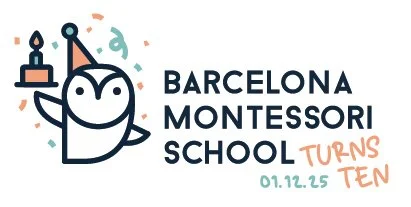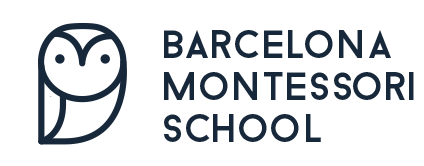
Montessori
What is Montessori?
Montessori is designed to give a child all the tools she or he needs in life in order to succeed by him or herself. It encourages confidence, independence and curiosity through self-directed activities.
Whilst Montessori materials are known around the world for their beauty and helping very young children to achieve benchmarks at an early age, Dr. Montessori created her methodology because she dreamed of a more peaceful future for all.
The pedagogy is based around promoting the intrinsic motivation of a child to want to know more. By bringing the world to the child at an age-appropriate level, children begin to develop sustained attention, and responsibility to themselves and others.
A Montessori child
A Montessori child grows up learning that they have the responsibility and freedom to work within the limits of the classroom.
During the work cycle, at all ages, children are supported by Guides and Assistants in selecting a work that challenges them to develop a skill or learn something new. By the removal of structured class timetables, children have the freedom to work with an activity for as long as they wish, repeating it to achieve mastery. Once a child has finished, they have the responsibility to leave it as they found it. By returning an item to its place, we ensure that everyone else has the freedom to work.
Whilst there are not many rules in a Montessori classroom, there are three key rules related to respect that govern the freedom and limits within the environment. Children are supported in learning to show:
Respect for themselves
Respect for others
Respect to the environment.
By demonstrating this respect and behaving responsibly and acting within these limits, we allow ourselves and others to have true freedom.
Positive Discipline
When we hear the term Positive Discipline, it may sound almost contrary to the Montessori approach. Afterall, discipline normally conjures up ideas of strict parenting, perhaps punishment. However, if we consider a different meaning of the word discipline, as suggested by Cambridge Dictionary; “the ability to control yourself or other people, even in difficult situations”, we begin to get closer to the reason why we feel that Positive Discipline is the ideal toolkit for a any parent, but particularly a Montessori Parent.
Positive Discipline was developed by Jane Nelson as a way to help children and teenagers develop into responsible and respectful adults. In actual
fact, many parents who complete a Positive Discipline course, quickly realise that the person who is actually changing during the course is the parent, and through them, the child.
The science behind Montessori
Scientific studies into the long-term impact of a Montessori education are very promising. Aside from anecdotal evidence from Sergey Brin and Larry Page, founders of Google who credited their successful collaboration to their similar experiences and educational development at Montessori preschools1, scientific research also supports the long-term benefits of a Montessori education.
A study based in Milwaukee, USA, found that children who completed their education in a Montessori school between the ages of 3 – 11, scored significantly higher on standardised tests in maths and science compared to children who received a standard education2.
In fact, studies suggest that even a short spell in a Montessori environment at age four can have long-lasting benefits, particularly for boys3.
Montessori and Neuroscience
Our understanding of the brain has come a long way in the last 100 years, since Maria Montessori developed her educational method. Can this knowledge help us to understand why the Montessori method helps children learn?
Perceived Control and Learning
Montessori education is often confused with other types of alternative centres and preschools, many of which do not follow set curricula or require students to complete classwork. Therefore, it is important to be clear that students following the Montessori curriculum do not spend their days playing and doing whatever they like. The Montessori curriculum provides clear activities that cover the same subject areas as traditional curricula. Students must complete these activities, and the classroom teacher or “guide” carefully monitors their progress. However, they are more free than students in traditional schools to choose when to do this. They can decide that Friday afternoon is not the time when they want to do Maths, or that they would like to have a break to talk quietly with a friend. The teacher carefully monitors this and students are encouraged and helped to complete activities if they are struggling to work.
This is designed to give students a feeling of control over their learning. Students are not free to do what they want but they can decide between various options. This decision is extremely important for giving students the feeling of control, something that has been repeatedly shown to be pivotal in the learning process4.
Movement and Learning
Like Jean Piaget, a very influential and important child psychologist, Maria Montessori believed that during infancy children’s mental development is reliant on movement or action. She believed that encouraging infants to move and interact with the world around them would improve their mental development. More traditional educational models do not allow for a great deal of movement, as much of the educating is done by a teacher in front of a large group of students who need to concentrate on the teacher and normally this requires them to be still. Studies of movement during the school day show that children in Montessori preschools spend more time moving around that those in traditional preschools5.
Studies suggest that encouraging movement from a very young age can be beneficial. Babies who are able to interact with objects from an early age and are encouraged to grasp or use tools, such as Velcro mittens to bring objects closer to them, are capable of attending to objects in a wider space around them, compared to infants who are not given this opportunity. Even very young (3 month old) infants who were encouraged to interact with their environment were more likely to recognise other people’s actions as having a purpose6. This finding is supported by studies of the brain that have found the existence of mirror neurons in the premotor cortex. These neurons activate when a subject completes a particular action and when the subject watches the same action being completed7. The aforementioned study using Velcro mittens suggests that babies tend to develop the ability to complete a goal directed action (such as reaching and grasping an object) at about the same time that they are able to see this action as being goal directed when watching another person. Therefore, it seems logical to assume that encouraging babies and children to interact with their environment will help them to learn at a faster rate than if they were just observing.
Executive Functions and Montessori
Executive Functions enable us to mentally play with ideas. They allow us to take time to think before acting when we encounter new and unexpected challenges. They help us to resist temptations around us and remain focused on our goal. Executive functions are related to a family of cerebrospinal mental processes, the flow of which are needed for concentration and attention in situations where the use of our “autopilot”, instincts or intuition would be insufficient or impossible.
There is general agreement that the main executive functions can be classified into three categories: inhibition, working memory and cognitive flexibility. It is increasingly believed that these functions are vital for success in school and life to such an extent that those with poorly developed executive function may be misdiagnosed as having ADHD (attention deficit hyperactivity disorder) or other learning difficulties.
The term Executive Functions was not around when Dr. Montessori completed her studies into how children learn. However, a Montessori education helps to develop executive functions in many ways. Montessori centers only have one example of any particular activity; meaning children must learn to wait. The activities are conducted on low desks or mats on the floor, so that children must walk from the shelving unit to the desk or the mat, through a maze of other children’s work in order to collect a new piece. In doing so, the pupils develop their working memory and have to avoid becoming distracted by what others are doing. Added to which, most of the activities are used frequently over time with new tasks being introduced or combined with other activities. Children also work together or teach each other, all of which aid their cognitive flexibility. In fact, studies suggest that 5 year olds who had attended a Montessori preschool showed greater cognitive flexibility than those who had attended standard preschools8
Time Management and Satisfaction
School days can feel long, particularly when evenings are filled with homework activities or studying for tests and exams. In Montessori schools, homework is typically limited. Dr. Montessori believed that it would not make sense to dictate what a child must do at home if it is not dictated in school. As we have seen so far Montessori students typically meet, if not excel at, the achievements of their peers and this in spite of a no homework policy. Interestingly, studies have found that students in Montessori schools spend more of their time on school related activities than students in traditional schools, who tend to spend more school time on leisure activities and socialising. Perhaps even more surprising is the finding that students in Montessori schools are more likely to see their classmates as friends than students in traditional schools. Montessori students also report feeling more energetic and interested in school than do students at traditional schools9.
Dr. Montessori created a child centred curriculum based on scientific observation. She moved the emphasis away from the teacher teaching and instead focused on developing an environment that helps the child to learn through a process of discovery and self-correction. Current scientific studies support the original work of Dr. Montessori and give us a better understanding as to why her curriculum can be so beneficial in enabling students to master skills and above all, develop a lifelong passion for learning and innovation.
______________________________________________________________________
“Education is a natural process carried out by the child and is not acquired by listening to words but by experiences in the environment.”
– Maria Montessori.
______________________________________________________________________
[embed class="is-loading"]https://www.youtube.com/watch?v=0C_DQxpX-Kw[/embed]
Dohrmann, K. R. (2007). Outcomes for students in a Montessori program. Rochester, NY: Association Montessori International/USA: Retrieved July, 8, 2007 ↩
Lillard, A. S. (2005). Montessori: The science behind the genius. Oxford University Press. Page 35. ↩
Allen, R. & Waldman, C. (2010). High-Five Teaching, K-5: Using Green Light Strategies to Create Dynamic, Student-Focused Classrooms. Corwin ↩
Pate, R. R., O’Neill, J. R., Byun, W., McIver, K. L., Dowda, M., & Brown, W. H. (2014). Physical Activity in Preschool Children: Comparison Between Montessori and Traditional Preschools. Journal of School Health, 84(11), 716-721. ↩
http://web.mit.edu/course/other/i2course/www/devel/wco.pdf ↩
Kandel, E. R. (2013). Principles of neural science. New York: McGraw-Hill. ↩
Lillard, N. Else-Quest,Science 313, 1893 (2006). ↩
“Overview of Research on Montessori Education: An Evidence-Based Curriculum“, taken from https://amshq.org/Publications-and-Research/Research-Library/Position-and-White-Papers. Accessed on Friday 12 June 15 ↩




